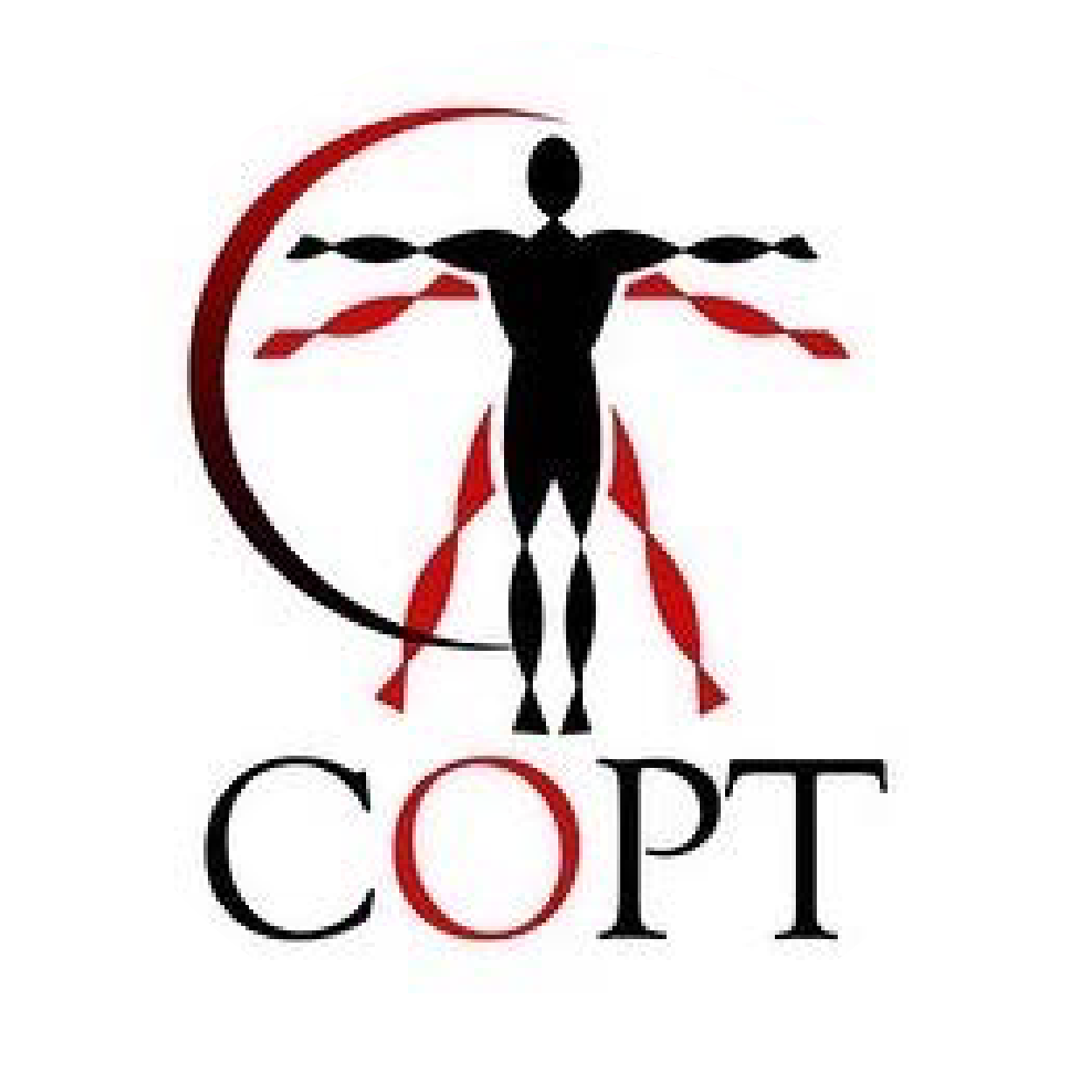Our Services
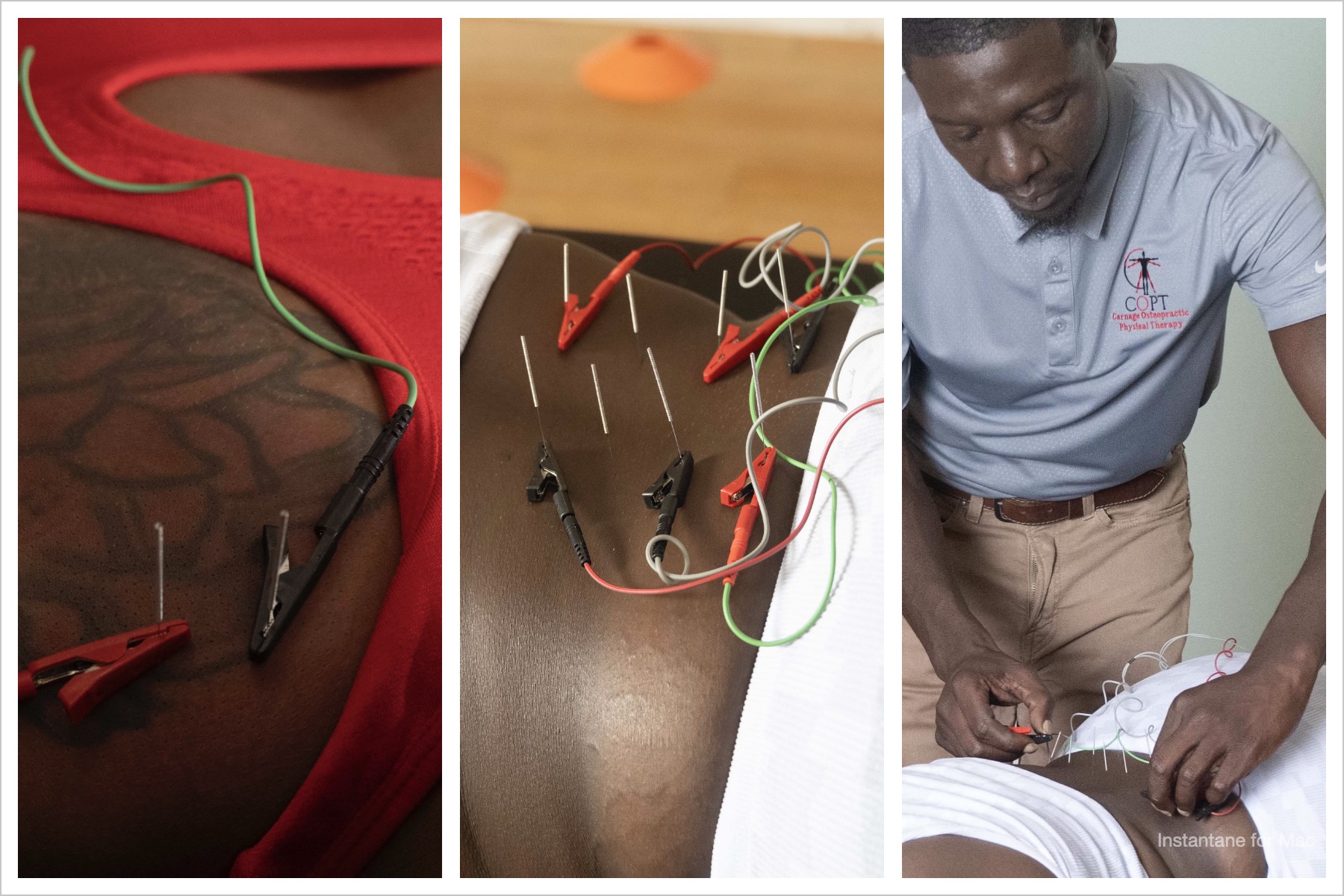
Dry Needling
What is Dry Needling?
Dry needling involves inserting small needles into trigger points to reduce pain and dysfunction. These points can develop due to various stresses like posture, movement, or emotional factors. Physical therapists use this technique to treat orthopedic and musculoskeletal conditions worldwide. Unlike acupuncture, dry needling is based on Western medicine principles and directly targets muscle tightness, joint mobility, and pain symptoms.
How does Dry Needling work?
What does Dry Needling do?
LOCAL MECHANICAL AFFECTS
- Winding, tenting or needle grasp to deform and disrupt fibroblasts within the neighboring collagen tissue resulting in increased opioid mediated response
- LTR causing decreased muscle contraction and improved range of motion, mobilizing collagen restrictions within the muscle and fascia
ELECTROPHYSIOLOGICAL EFFECTS
- Decreased spontaneous electrical activity (SEA) at the active trigger point
- Improved neuromuscular activation and timing
NEUROPHYSIOLOGICAL EFFECTS
- Increased pressure pain thresholds
- Stimulation and decreased inhibition of the descending sensory pain pathways
- Activation of central mediated systems including activation of areas in the brain involved in pain processing and the emotion of pain
CHEMICAL/CELLULAR EFFECTS
- Improved blood flow to nerves, tissues due to a decrease in vascular compression
- Inflammatory and immune system responses initiated.
Does Dry Needling Hurt?
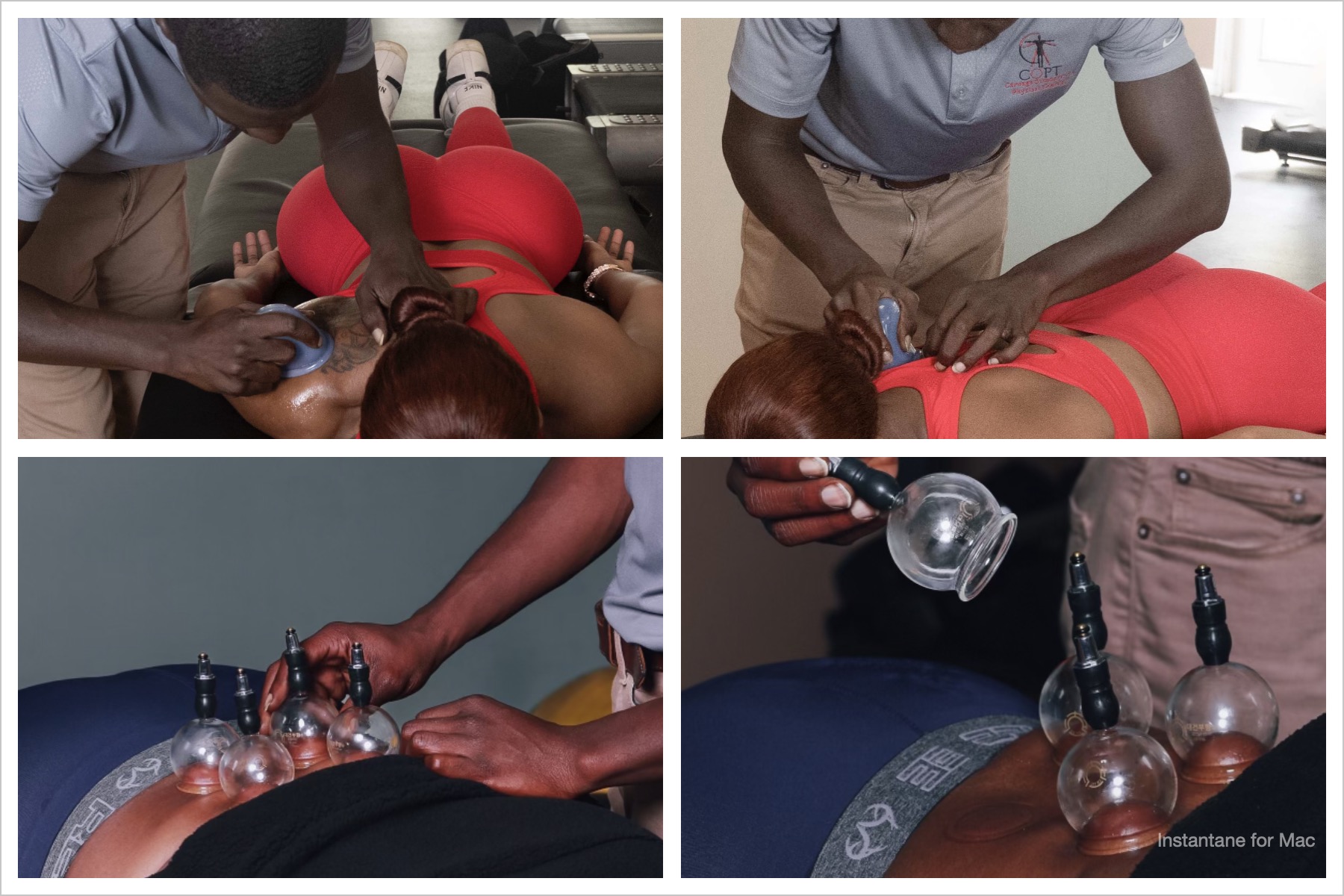
Dry Cupping and Massage Cupping
What is Dry Cupping and Massage Cupping
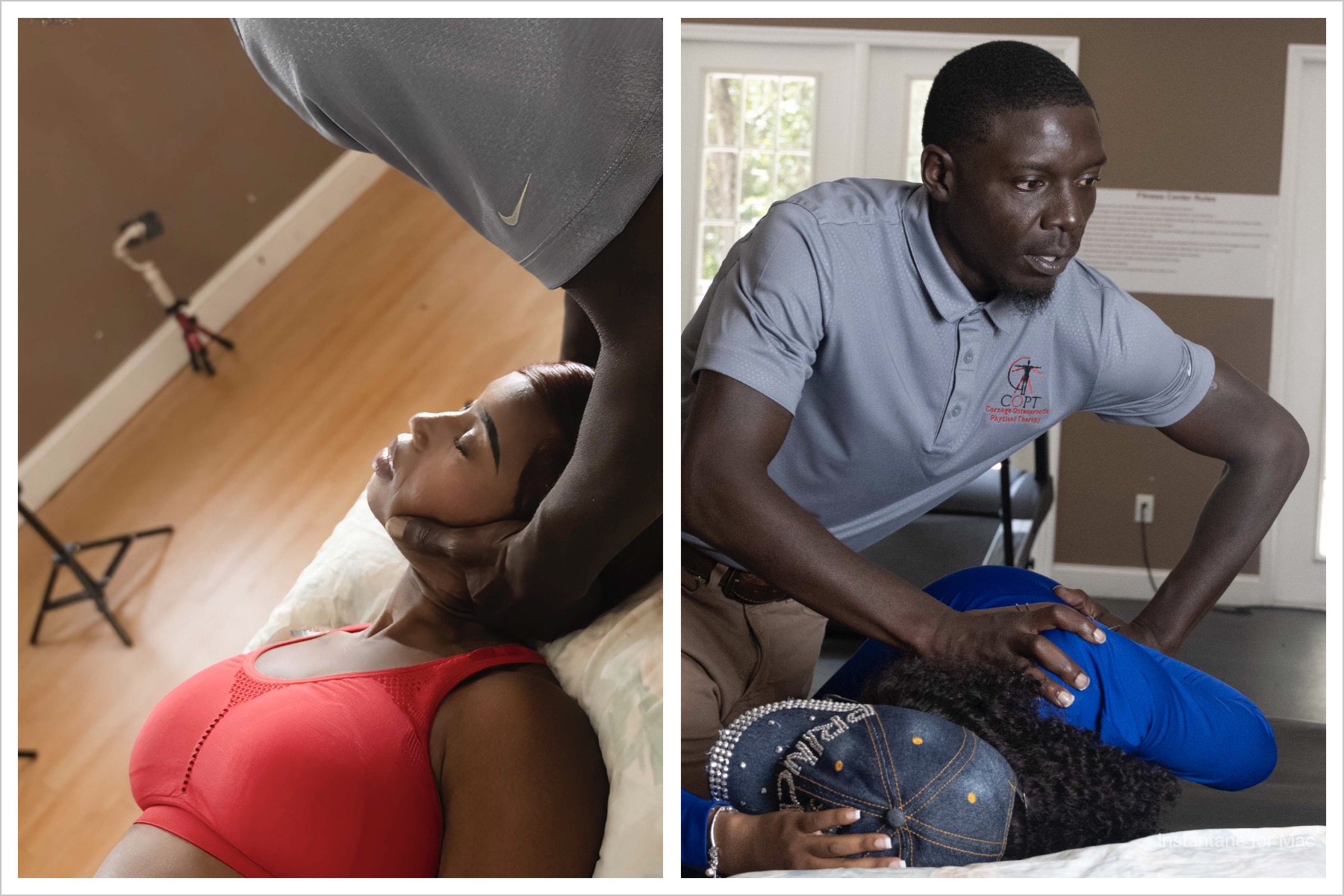
Spinal Manipulation
What is Spinal Manipulation?
Spinal manipulation involves manual techniques designed to relieve joint pressure, restore spinal alignment, and take pressure off spinal nerves. In the process, you get relief from your pain and you support your body’s natural healing ability.
How does Spinal Manipulation work?
This is one of the most common manual techniques for restoring spinal movement. Your provider positions your body in a specific way, then uses their hand to apply a short (lowamplitude), quick (high-velocity) push over the vertebral joint. Your provider carefully treats one joint at a time to ensure optimal results. In many cases, you hear an audible pop as pressure releases in the area. Spinal mobilization Spinal mobilization is a gentle (low-force) technique. You may have a back condition that needs a gentle touch or it may be the best approach for your comfort, body size, and preferences. There are several spinal mobilization techniques. For example, your provider may gently stretch your spine or use a spring-loaded manual tool to provide the force instead of their hand. Upper cervical adjustment Upper cervical adjustments use different techniques to restore health to the upper vertebrae in your neck that support your head.
What should I expect during Spinal Manipulation?
Before performing spinal manipulation, your provider does a thorough evaluation. In addition to reviewing your medical history and symptoms, they complete a physical and neurological exam and evaluate your posture, strength, and balance. In some cases, they may order diagnostic imaging. After determining the root cause of your problem, and talking with you about your preferences, they recommend a type of spinal manipulation. Don’t keep struggling with back pain or headaches
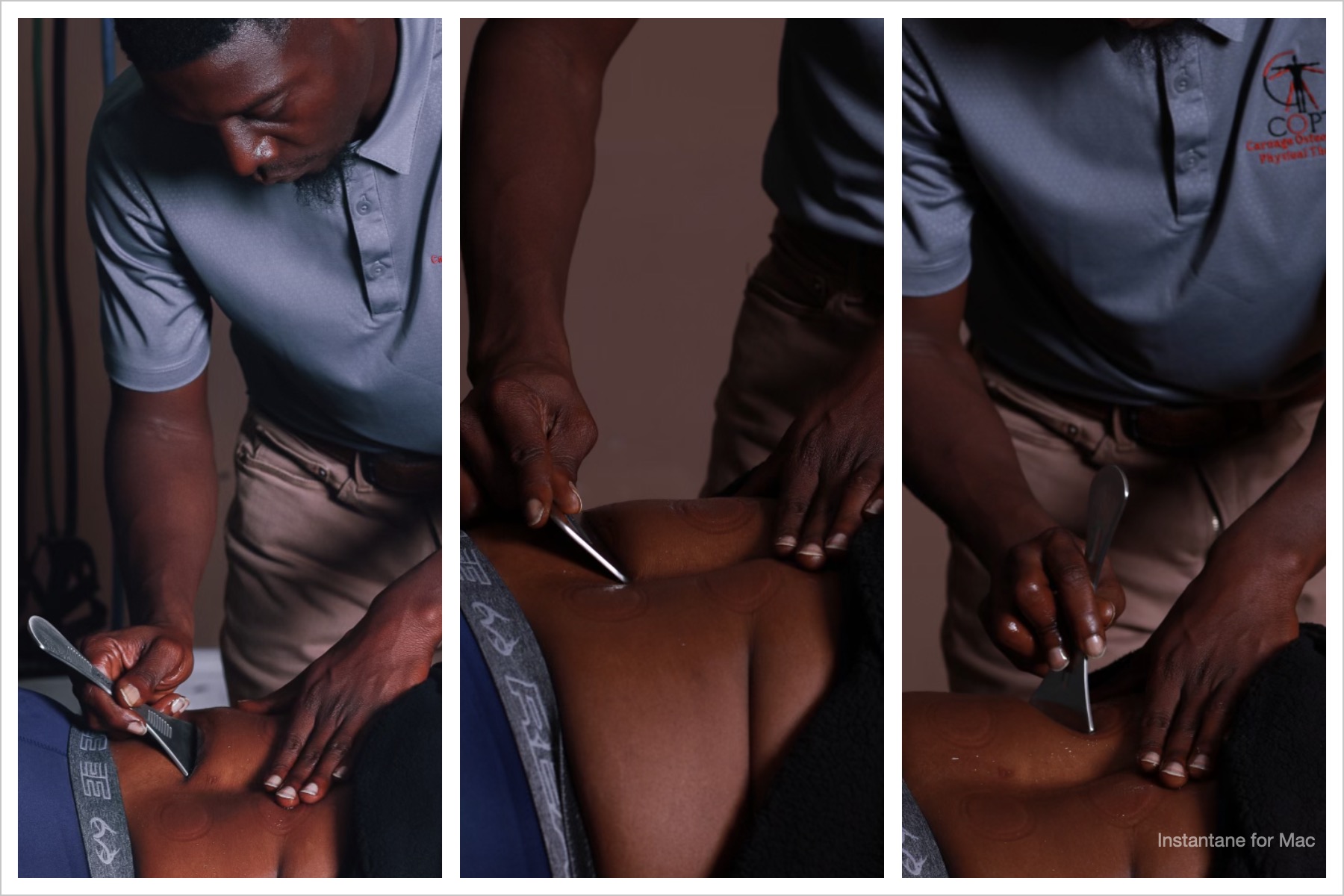
Instrument assisted soft tissue mobilization
What is Instrument assisted soft tissue mobilization?
Instrument-assisted soft tissue mobilization is a noninvasive treatment that resolves soft tissue dysfunction using specialized metal tools. The experienced providers have extensive training with the most advanced tools and strategies, including FMT blades, fibrosis release and myofascial stretching (FRAMS). Issues like muscle knots and internal scar tissue can lead to soreness, pain, restricted movement, and other problems, but instrument-assisted soft tissue mobilization offers effective relief.
Who can benefit from instrument-assisted soft tissue mobilization?
Instrument-assisted soft tissue mobilization can help with many different physical problems, such as:
- Neck pain
- Back pain
- Hip pain
- Tendonitis
- Tennis elbow
- Carpal tunnel syndrome
- Muscle strains
- Shin splints
- Ligament sprains
- Tennis elbow and golfer’s elbow
- Surgical scars
- Traumatic scars
This innovative treatment approach may also help with a number of other soft tissue conditions.
What are the advantages of instrument-assisted soft tissue mobilization?
With instrument-assisted soft tissue mobilization, you can expect a number of beneficial effects, including:
- Better range of motion
- Reduced tenderness and hypersensitivity
- Reduced pain
- Reduced tightness
- Improved strength
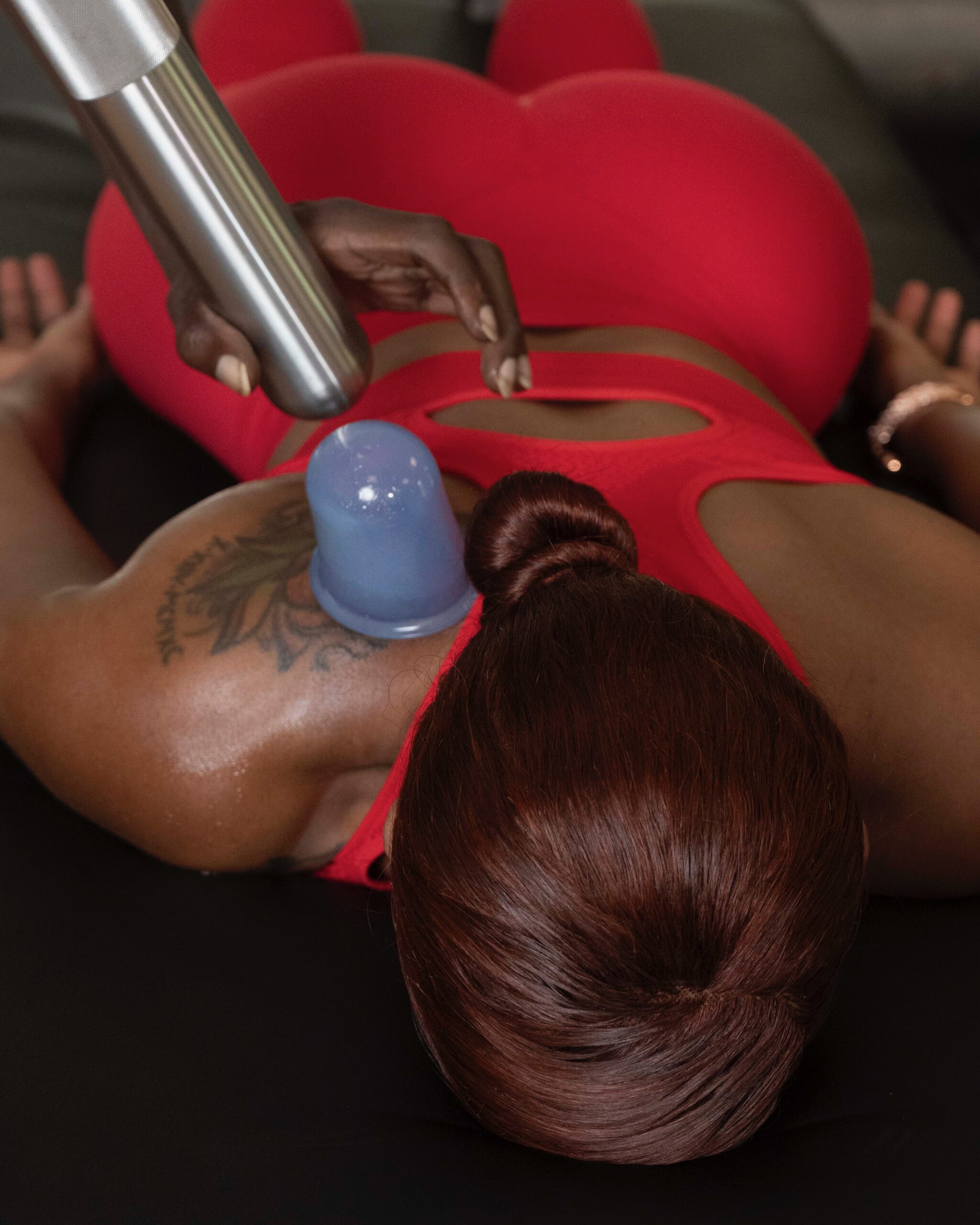
Body Tempering
What is Body Tempering?
Body Tempering (BT) is a soft tissue treatment technique developed by Donnie Thompson in 2014 that involves deep and heavy pressure to muscles using weighted steel cylinders that are held statically on or moved slowly along the length of a muscle. It is common for people to use foam rollers, lacrosse balls etc. to roll on and over tissues that feel tight or sore in an effort to improve the way they feel and/or function. Body Tempering is working on this same principle but with exponentially greater effect. The weight is much heavier and the patient can lay passively while the weights are passed over them vs. having to actively hold yourself in an awkward position to get the job done such is the case with foam rolling. The result is considerably greater with minimal effort by the patient. There are many theories on how and why Body Tempering is effective. Dr. Carnage primarily uses this modality in an effort to reduce neuromyofascial tone and therefore the feeling of “tightness”. In addition, rolling heavy weights or keeping a heavy weight statically on a tendon or other connective tissue should cause that tissue to become stronger over time and thus better able to tolerate the forces an athlete is asking the tissues generate during their particular sport.
What conditions improve with body tempering?
Many athletes use body tempering to improve their strength training and overall performance. Carnage Osteopractic Physical Therapy also uses the therapy to perform myofascial release and relax trigger points. The myofascial tissues, called fascia, surround and support your muscles. Repetitive stress, intense activity, and injuries cause scarring that makes the fascia stick to your muscles. When that happens, the tissues restrict muscle movement and cause pain. Body tempering releases the tissues and restores mobility. In addition to promoting muscle health, body tempering improves conditions such as:
- Tight hamstrings or calves
- Limited shoulder motion
- Knee pain
- Iliotibial band (ITB) syndrome
Body tempering has the ability to improve many different problems, depending on the area treated. For example, performing body tempering on your calves may strengthen your ankles.
Available Monday – Friday!
Contact us today to schedule your consultation and take the first step toward a pain-free life with osteopractic care. Let’s work together to achieve your wellness goals.
Phone: 229-221-8437
Email: COPT052022@gmail.com
